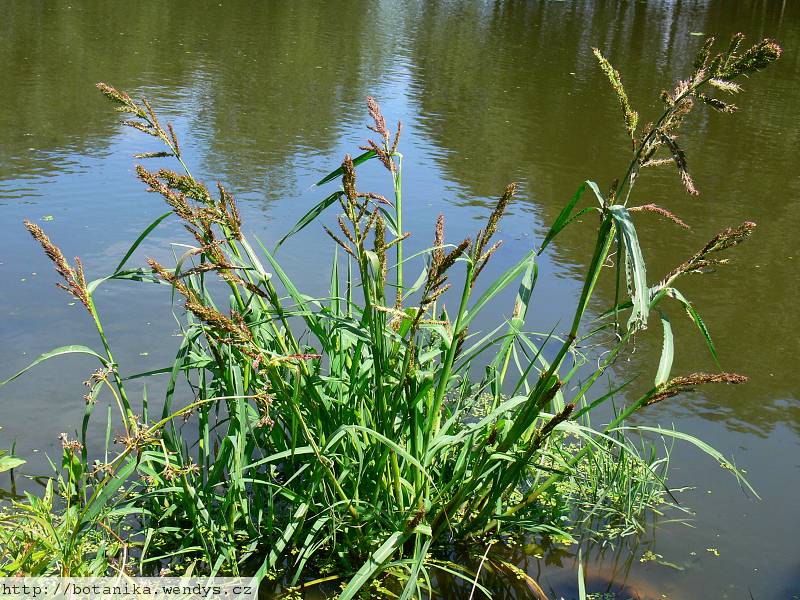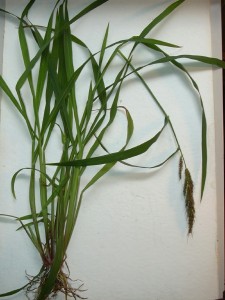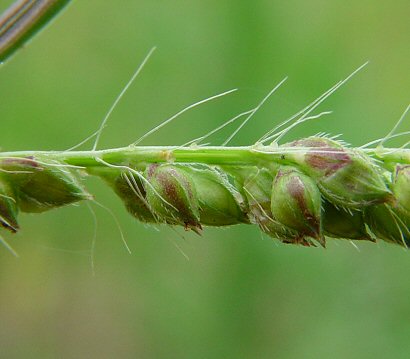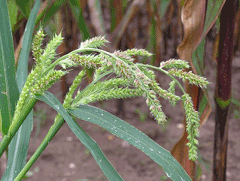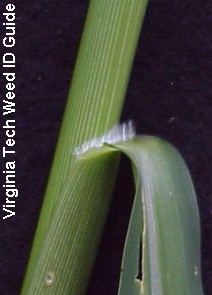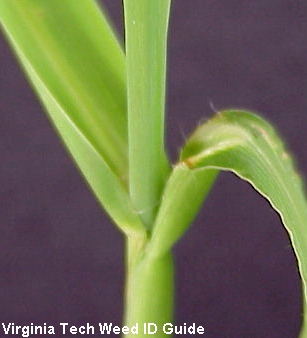The first time I saw Barnyard Grass was decades ago in a real barnyard near a drain spout. I was with forager Dick Deuerling who identified it for me. The next time I saw the plant it was nearly a different color completely. Purple. Very confusing.
Barnyard Grass, also called Cockspur Grass, is a hated weed around the world. It can mature in as little as 42 days producing some 40,000 seeds on each plant (good news for us.) It is a severe problem in rice production with one plant per square foot reducing production 25%. It can reduce corn yields 20%. While it likes damp places it is also not bothered by elevation and will grow to 5,000 feet.
A native of Asia Barnyard Grass is found not only around the world but throughout North America save for Alaska, the Northern tier of Canada and Newfoundland. And although it might be from somewhere else Native Americans knew a good thing when they saw it. The Cocopa, Paiute and Tubatulabal used it for food and stored it for winter use. The Yuma, however, really liked it. They pounded the seeds, winnowed them, ground them and made a meal and mush out of it. They also preferred to cook fish with the grain.
Botanically the grass is Echinochloa crus-galli, eh-kye-no-KLOE-uh kruss-GAL-eye. That pronunciation is close to Greek. Anglicized one also hears ek-ih-NOK-loh-uh krus GAL-ee. Echinochloa is two Greek words meaning Grass Hedgehog (porcupine.) This is because the seed head can have awns, straw like bristles sticking out of the seed head, or just one at the end, or none. Crus-galli — also without the hyphen — is dead Latin for Cock Spur, again a reference to the seed spike, see below.
There are about 20 species in the genus with great variability. One has purple stripes on its leaves. But one thing they do have in common, or don’t depending on how you want to say it, is barnyard grass does not have a ligule. It is the only common summer grass with no hairs or membranes at the collar. What does that mean?
Grasses are nearly as bad as mushrooms to sort out. They’ve an argot all their own and field books are wildly expensive often costing thousands of dollars. Usually when a blade bends away from the stem right where it bends there is a small vertical structure, like a collar or a tuft of hair. All common grasses have it except the genus Echinochloa. It’s absence is a major identifying characteristic of the genus. For example, the Fall Panicum, right, resembles Barnyard Grass but has a white legule. The Echinochloa crus-galli below has no ligule. Barnyard Grass also resembles Junglerice, Echinochloa colona, but has no purple bands on leaves.
Here is a research tip when you’re trying to figure out what grass you have in front of you. Do a google search using the botanical name you think it might be then add the name: Umberto Quattrocchi. He’s a grass expert with definitive publications, and fortunately not a common name. Usually you will get an except from from of his (rightfully) expensive books on the first page of your search. Once you go to the reference you sometimes have to page up or down a page or two because his entries tend to be detail heavy and long. But it is a way to access expert material on grasses without spending thousands.
Green Deane’s Itemized Plant Profile: Barnyard Grass
IDENTIFICATION: Echinochloa crus-galli: A summer annual to five feet. Seedlings hairless, leaf sheaths often tined red or maroon at the base, often growing outward before turning up. Stems thick, often branched at the lower nodes, may be tinged red to maroon at the base. Leaves four to 20 inches, 1/4 to 1.25 inches wide. Leaves have a distinct white mid-vein. Near the stem end the vein becomes keeled. There may be some short hairs at the leaf base. No ligule. Flowers knot-like. Seed head a terminal panicle, four to 16 inches long, green to purple, may have individual spikelets with a long terminal awn (like a thin piece of straw from a broom at the end of the seed spike.) Lower branches of flower spread farther apart than the upper branches. The head can be erect or drooping, sometimes purplish.
TIME OF YEAR: Flowers June to October, seeds in fall, germinates from late winter to early spring. In warm areas the process can be continuous throughout the year.
ENVIRONMENT: Roadside, ditches, irrigated crop fields, pastures, orchards, vineyards, margins or ponds and rice fields. Tolerates poor drainage and flooding, usually found in wetlands and wet places, rich soil, swampy ground, brackish marshes, swamps, disturbed sites, poorly drained areas et cetera. Intolerant of dense shade. Can take up to 80% of the nitrogen out of the soil.
METHOD OF PREPARATION: Winnowed seeds used as a staple grain, parched, roasted, boiled, ground into flour. Young shoots are eaten as a vegetable, raw or cooked. Roots are boiled to temper indigestion in the Philippines. Seeds can be popped like popcorn. In Japan it is used to make macaroni and dumplings. Seeds are roasted and used as a caffeine-less coffee substitute.

